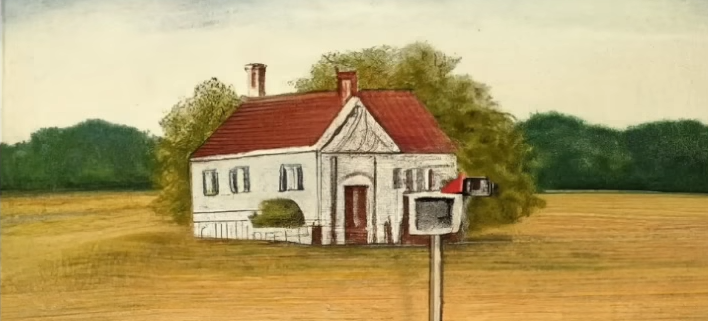This classic 1970s text adventure now has Google AI graphics

Zork was the first game made by the great Infocom, and one that would influence an entire genre. Inspired by the example of Colossal Cave Adventure, the first text adventure to gain any kind of widespread notice in the computer scene of the 1970s, Zork is a sprawling piece of interactive fiction, initially developed by four friends and coders at MIT on the PDP-10 computer. It was first released in 1977 for the PDP-10, before its original developers and other collaborators set up Infocom to polish, expand and release it as a commercial product for PCs.
The game was not only the launchpad for Infocom generally, but an entire genre. This wasn’t the first text adventure but its sophistication far surpassed what had come before (adventure used two word commands). The text parser was designed such that players could enter ‘natural’ language and the game would interpret these commands and act as a kind of narrator or dungeon master, explaining what happened and the current situation / locale. Zork isn’t just responsive, but it’s funny too, and managed to create that sense of a personality in the computer talking back to you. It inspired a flood of similar games, very few of which came close.
Sophisticated text inputs and outputs are very much a contemporary topic and, Zork being an entirely text-based game, the inevitable has happened.
“Some adventure game fans at Google wondered what would happen if you used the output from the classic text adventure game ‘Zork’ as the input to Imagen, Google’s text-to-image diffusion model,” writes Google principle engineer Matt Walsh.
“To support the results we wanted we made some additions to Zork itself, which was a fascinating journey through an arcane language and a lost (but re-engineered) toolchain”.
The results are below.
So here we have a fantasy text adventure’s descriptions to the player being used as prompts for an AI image creation tool. As Walsh’s voiceover explains, it wasn’t quite so simple, and the team working on this project had to yoke-together elements of how Zork presents information and how Imagen interprets and remembers things. And the team went further, showing it could implement for example a visual inventory for the player.
The oddest thing about this, however, is that Imagen is capable of generating a wide variety of artistic styles. The example shown in the video is a white house rendered in various ways, from a Rembrandt pastiche to a mosaic to a picturesque pencil drawing. The various other locations shown also range from photorealistic to impressionistic in style.
So this isn’t one version of Zork visualised, but a countless number of different variants of what this world may look like. Zork 2 is also shown off briefly, along with the promise that this project’s work can relatively easily be applied to other Infocom titles.
The way Walsh talks, it does sound like this is a project intended for release at some point, though it is not currently available to the public. Activision ended up owning Infocom, and Zork was the only brand from the company it really used, so it may be that some agreement is necessary before it can be.
It is straight-up weird to ‘see’ Zork for the first time, a world that only ever existed visually in the imagination. And not because I think this is an especially great visualisation of it: as you might expect, some rooms look atmospheric and interesting, some locations seem a bit uninspired, and of course there’s that gamut of styles that makes it impossible to think of this as one coherent Zork.
But it is, in its way, a striking example of the new paying tribute to the old. No-one knows where we’re going to end up with these AI tools, but using them to breathe some life into the interactive past certainly seems like one of the more benign uses.
Curious name, Zork. It came from a piece of jargon the developers used amongst themselves: unfinished programs were called “zork”. And it looks like we aren’t done with Zork yet.
Source link




